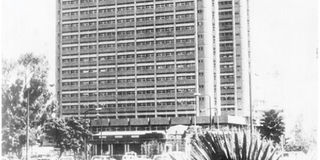From Special Branch to National Intelligence Service

PHOTO | FILE Nyayo House, where Special Branch officers tortured government critics.
What you need to know:
- MPs had in July rejected the Bill for introducing a clash in the proposed chain of command
- The shifting of staff from the old Special Branch to join the new NSIS was not easy
Parliament started examining a draft Bill that would lead to the disbandment of the Special Branch and the creation of the National Security Intelligence Service.
Also known as the Directorate of Intelligence Service, the Special Branch was infamous for hunting down and torturing government critics at Nyayo House. This had given it a bad image. The name change was to be accompanied by a purge within its ranks to improve its image.
But the law that sought to create the new outfit was twice rejected by Parliament, which sent the National Intelligence Service Bill back to Attorney General Amos Wako.
On November 28, 1996, the AG presented the second draft. The MPs pointed out several inconsistencies in the chain of command that went against the Constitution.
One of these was that the NSIS would not take orders from the commissioner of police, who under the Constitution, was the head of all police departments.
However, the hiring of staff would be independent of the constitutional bodies — the Police Commission and the Public Service Commission.
“The government wants to change the Constitution through the back door,” argued Kikuyu MP Paul Muite. Nominated MP Dalmas Otieno described it as a Bill “in bad faith”.
CHAIN OF COMMAND
Besides the constitutional issues, MPs had in July rejected the Bill for introducing a clash in the proposed chain of command. It had sought to have two positions of directors general — DG external and DG internal. The MPs pointed out that it was unconventional for such a vital arm of the security forces to have two parallel heads as it would pose a threat to intelligence gathering.
In the third round, Mr Wako brought a Bill that was arrived at after intensive consultations with MPs. First, there was one DG with two deputies in charge of internal and external matters.
The infringement to the Constitution was then cured by providing for “sharing of information” between the DG and the police commissioner (now inspector-general) while the PSC would retain its supervisory powers.
The shifting of staff from the old Special Branch to join the new NSIS was not easy. After the recruitment of its top commanders, officers perceived to be “unfit” were sent back to the police service in uniform. Some top officers of NSIS were head-hunted from the private sector. The newcomers were not well received by insiders, who thought they had been unfairly sidelined.
Nearly 17 years on, the independent intelligence organ is today known as the National Intelligence Service (NIS).




